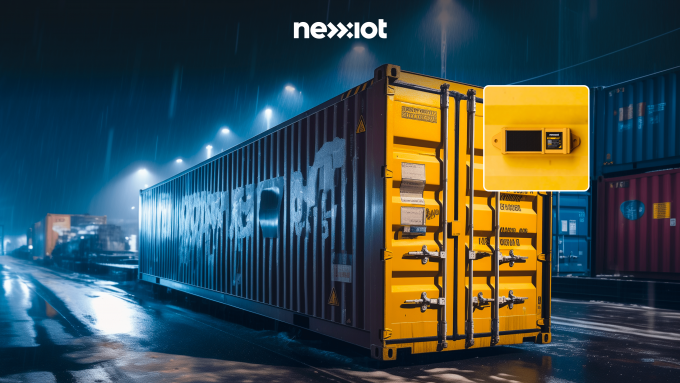Zemba gets things moving, as Hapag-Lloyd signs up for 'greener' shipping
Proving to be more than just idle talk, the Zero-Emission Maritime Buyers’ Alliance (Zemba) has ...

World’s largest connected container fleet offers new hope to shippers
The supply chain is being tested – like a vessel that’s creaking and straining to make headway in volatile seas. In this age of geopolitical turbulence and trade uncertainty, quality data brings optimism and calm.
Since the adoption of the ‘dry’ intermodal shipping container as a global standard in the middle of the last century, innovation in the maritime cargo space has been limited. Now in a bold, industry-changing move, Hapag-Lloyd has challenged the entire market.
The quality-centric ocean carrier is betting big on the value of data and is bringing unprecedented innovation to the market. With the deployment of intelligent hardware and AI based analytics across its entire container fleet, it is now offering next-level transparency and data services to shippers. Clients and partners will benefit from watertight assurances around cargo quality, process efficiency, safety and security.
In his 2008 book ‘The Box’, Marc Levinson highlights how the adoption of the container lifted billions of people around the world out of poverty. He explained the sweeping economic consequences that resulted from the sharp fall in transportation costs that containerisation brought about. Now the adoption of digital technologies, with IoT sensors on every mobile asset in the supply chain, promises shippers the peace of mind they crave, no matter how many ‘black swan’ events the world throws at them.
The start of 2024 brought more unexpected challenges. These come on the back of multiple disruptions over the past few years. They include shifts in trade practice and cargo flows, a global pandemic, yo-yoing freight rates, Suez crisis 2.1 (Ever Given blockage), port congestion (eg, Long Beach offshore vessel idling), vessels burning at sea (eg, Express Pearl in Sri Lanka) and uncertain Panama Canal water levels, from shifting rainfall patterns (El Niño/La Niña). Now the world has been hit by two new developing crises.
These latest threats to stability result from the Ukraine conflict, with port closures in the Black Sea, and Suez crisis 2.2, with attacks in the Bab el-Mandeb Strait stemming from conflicts in the Red Sea region.
This is all set in the context of shifting geopolitics, the threat of wider wars, ESG and regulatory pressures (eg, ETS/EU Emissions Trading System) and changing demands from manufacturers, retailers and consumers. The need for supply chain agility and control is rising. Instead of lurching from crisis to crisis, there is now an active mega-trend to take the initiative. This means having the best tools in place to adapt to the unknown and make the most relevant corrections in time.
In a hyper-connected world, multiple factors interact to create a surprising, and sometimes shockingly unexpected outcome. This is the nature of complex systems. In the meantime, the industry strives to adapt reactively, provide assurances to clients, mitigate risks, create better services, gather core information and automate processes, but there is a limit to how much participants can achieve on their own.
Uncertainty pushes up freight rates, increases economic instability, negatively impacts retailers and manufacturers and puts tougher demands on service providers to be efficient. It also creates considerably more emissions. Greensee AI, a company providing services to reduce energy consumption and carbon footprint in the maritime space, calculated that Suez re-routing around the Cape of Good Hope generates an extra 2 million tons CO2-eq/month. The Red Sea attacks are diverting significant maritime traffic around Africa, with an average extra sailing distance of up to 5,000 NM. The vessels use more fuel and emit more GHG emissions.
Greensee calculates that with 400 container ships sailing every month through the Suez route, the extra GHG emitted for rerouting exceeds 2 million tons CO2eq/month for containerships alone. Assuming an average of 53 million tons of cargo ends up in European ports per month, the additional ETS taxes will reach €30 million in January alone.
Red Sea threats are pushing deliveries out by 2-3 weeks, which means that between 1 to 3 million containers are delayed and are effectively pushed out of the regular flow of boxes. As we approach Chinese New Year in early February, we are facing a potential shortage of intermodal boxes. In the past years, many of the world’s ports have been congested due to problems initiated at the other side of the world. This is a problem that effects trading businesses everywhere and is set to continue as each new black swan event arrives.
In the recent Loadstar podcast featuring Hapag-Lloyd’s Olaf Habert, the project lead for smart containers, and Nexxiot’s CEO, Stefan Kalmund, the digitalisation of the entire Hapag-Lloyd dry container fleet was discussed. As the rollout reaches its conclusion, Olaf explained that the opportunities that come from quality data would be multiple. One advantage is that Hapag-Lloyd will be able to steer fleet deployments and manage utilisation with greater precision – which boosts the quality of experience for clients.
Knowing where everything is, where it should be left when empty, when things have been delayed or misrouted, and having greater insights into client behavior enables the organisation to be much more efficient and adapt to new market fundamentals. On top of this, a whole raft of additional services, based on data-driven, empirical knowledge will soon be coming online for Hapag-Lloyd’s clients. Regardless of the nature of new risks, the business is prepared to react, predict and iterate, to provide the market with assurances and calm.
This sponsored article was written by Nexxiot co-founder and CXO, Daniel MacGregor
Comment on this article